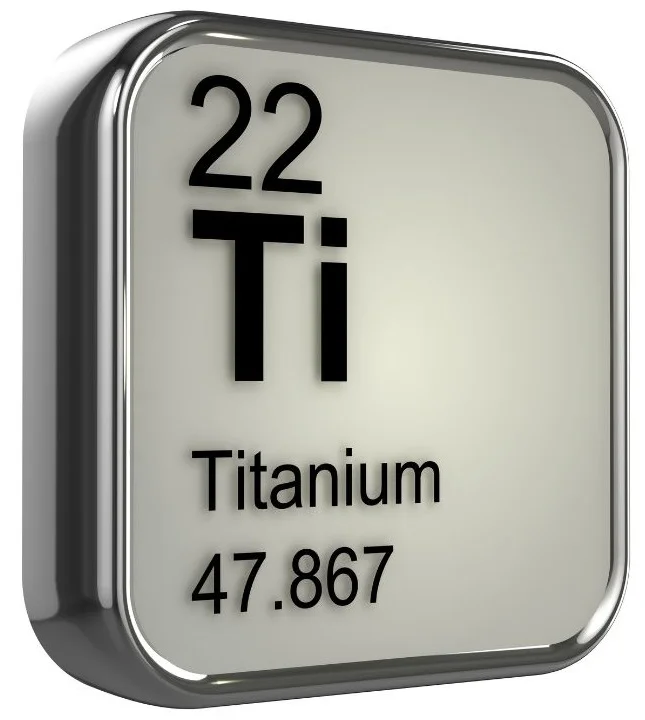Titanium metallicum is a homeopathic remedy made from the metal titanium.
This remedy is often used for treating skin conditions like eczema and lupus, as well as issues related to the respiratory system such as nasal catarrh (chronic inflammation of the nose).
It also plays a role in addressing vision disturbances and certain sexual dysfunctions.
Titanium metallicum is found in trace amounts in bones and muscles, and even in foods such as apples.
It is associated with tuberculosis and lupus processes, especially when used externally.

SOURCE INFORMATION
Scientific Classification
- Kingdom: Elements
- Symbol: Ti
- Atomic Number: 22
- Category: Transition metal
- Discovery: Discovered in 1791 by William Gregor.
Origin and Historical Facts
- Titanium metallicum was discovered in the late 18th century.
- Its applications in homeopathy stem from its use in the management of skin conditions and nasal infections.
- Interestingly, apples are known to contain small amounts of titanium, demonstrating the presence of this element in natural, everyday substances.
- Over time, homeopaths have explored its potential for treating a wide range of conditions, particularly those involving the skin and respiratory systems.
DRUG PATHOGENESIS
- Titanium metallicum affects the skin, respiratory system, and eyes.
- It is used for patients who suffer from vision problems where they can only see part of an object (vertical hemiopia) and for those experiencing giddiness.
- In addition, it is useful for individuals with sexual weakness, particularly premature ejaculation.
- The remedy is also indicated for chronic inflammatory conditions like lupus and Bright’s disease (a historical term for kidney disease).
PHYSICAL CONSTITUTION, DIATHESIS, AND TEMPERAMENTS
- Physical Constitution: Suitable for patients with chronic skin conditions, respiratory infections, and kidney issues.
- Diathesis: More common in individuals with tuberculosis, lupus, and chronic nasal inflammation.
- Temperament: Suited to people who tend to have weaknesses in the skin and respiratory systems, as well as sexual issues related to premature ejaculation.
KEY CHARACTERISTICS
- Partial Vision Disturbances: Patients only see half of an object, a condition known as vertical hemiopia.
- Sexual Weakness: Premature ejaculation during intercourse.
- Skin and Respiratory Afflictions: Useful in managing eczema, lupus, rhinitis, and nasal catarrh.
- Chronic Conditions: Plays a role in managing long-term illnesses like tuberculosis and Bright’s disease.
DETAILED ORGAN SYMPTOMS
VISION
- Vertical Hemiopia: The peculiar symptom where the patient sees only half of an object, indicating issues in the visual cortex or optic pathway.
- Giddiness and Dizziness: Accompanied by this specific type of vision impairment.
SEXUAL HEALTH
- Premature Ejaculation: A sense of sexual weakness marked by ejaculation that occurs too early during intercourse, often accompanied by physical and emotional exhaustion.
RESPIRATORY SYSTEM
- Nasal Catarrh: Chronic inflammation of the nasal passages, often accompanied by mucus buildup and irritation.
- Rhinitis: Inflammation of the nasal mucous membrane, often presenting as a runny or blocked nose.
SKIN
- Eczema: Characterized by inflammation, itching, and sometimes oozing skin lesions.
- Lupus: An autoimmune condition that causes red, scaly patches, often on the face, and can affect multiple organs.
KIDNEYS
- Bright’s Disease: Refers to a historical term for chronic nephritis or inflammation of the kidneys, typically presenting with proteinuria (protein in urine) and other kidney dysfunctions.
MODALITIES
Worse
- Aggravated by mental strain or overexertion.
- Exposure to cold or damp weather.
Better
- Improvement in warm environments.
- Gentle rest and avoidance of excessive exertion.
WHAT ARE MODALITIES IN HOMOEOPATHY?
RELATIONSHIP WITH OTHER DRUGS
Compare with
- Silicea: Known for treating skin conditions like abscesses and promoting the expulsion of foreign materials from the body.
- Graphites: Useful in chronic skin conditions, particularly eczema.
- Natrum muriaticum: Also used for nasal catarrh and conditions involving chronic respiratory issues.
DOSE
- Lower and Middle Potencies: The lower potencies (6X, 12X) are typically used for conditions related to the skin and respiratory systems, while middle potencies (30C) are preferred for managing vision disturbances and sexual weakness.
Frequently Asked Questions
What is Titanium metallicum used for in homeopathy?
- Titanium metallicum is used for treating skin conditions like eczema, nasal catarrh, and vision disturbances.
- It is also effective in addressing sexual weakness, especially premature ejaculation.
Can Titanium metallicum help with vision problems?
- Yes, it is specifically indicated for vision issues like vertical hemiopia, where a patient can only see half of an object at a time.
How is Titanium metallicum administered?
- Titanium metallicum is typically administered in lower to middle potencies, depending on the condition being treated. It is taken orally in tablet or liquid form.
Is Titanium metallicum effective for eczema?
- Yes, Titanium metallicum is often used for chronic skin conditions like eczema, helping to alleviate inflammation, itching, and other symptoms.
What are the key symptoms indicating Titanium metallicum use?
- Key symptoms include partial vision disturbances, premature ejaculation, eczema, nasal catarrh, and kidney issues like Bright’s disease.
Glossary of Difficult Words
- Vertical Hemiopia: A condition where the patient can only see the upper or lower half of an object.
- Premature Ejaculation: A sexual disorder characterized by ejaculation that occurs too soon during intercourse.
- Catarrh: Excessive discharge or buildup of mucus in the nose or throat.
- Rhinitis: Inflammation of the nasal mucous membrane.
- Eczema: A skin condition causing itching, redness, and swelling.
- Lupus: An autoimmune disease that affects various parts of the body, particularly the skin.
- Bright’s Disease: A historical term for a group of kidney diseases that cause inflammation and the presence of protein in urine.

I like the article that is well written. I am also a homeopath with DHMS degree and a retired Bureaucrat.
Glad to hear from you …